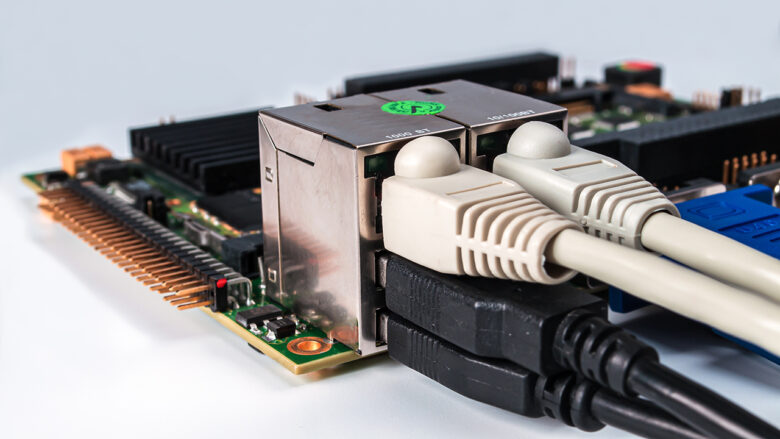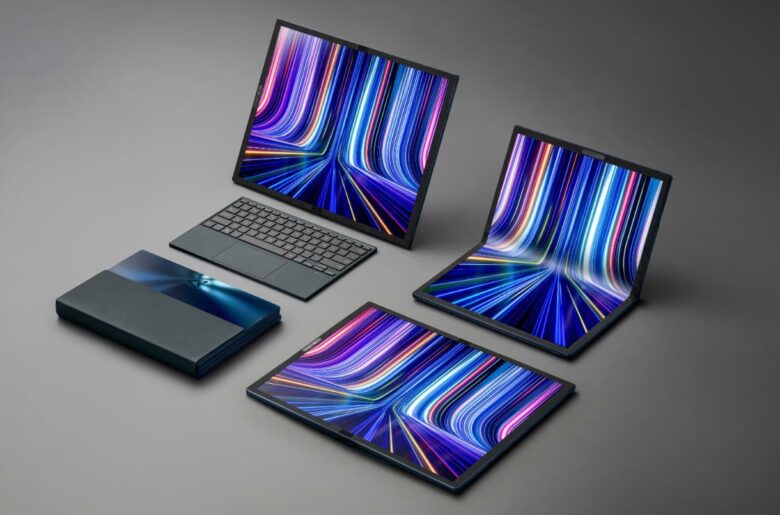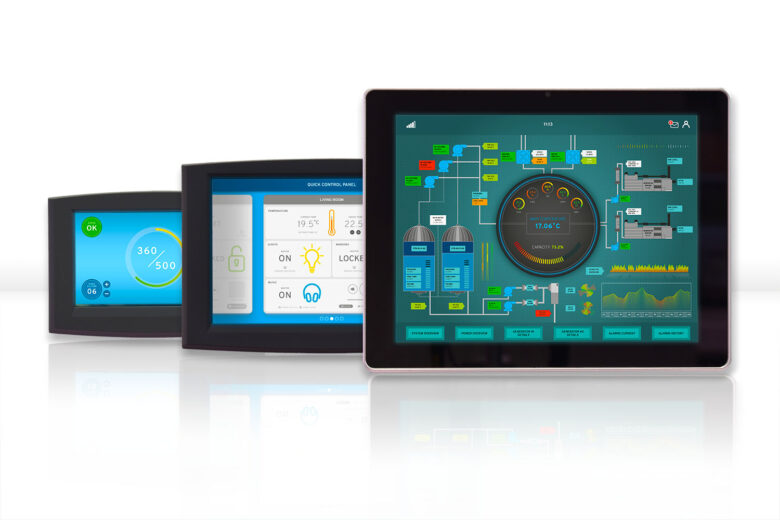In an era of rapid technological advancement, embedded devices are becoming an increasingly integral part of our daily lives. From smart thermostats and medical equipment to industrial controllers and automotive dashboards, these devices rely heavily on display to communicate information effectively.
Choosing the right display for your embedded device is a critical decision that can impact both its performance and user experience.
This often-overlooked technology is amazing, but how did we even get here? How did we go from cathode ray tubes to cutting-edge displays of today?
Contents
- The evolution of embedded device technology
- The basics – understanding your application
- Consider environmental conditions
- Exploring different display technology options
- Customization options
- What resolution and size do I need?
- Touchscreen vs. non-touchscreen
- Power consumption
- Ensuring visibility and brightness
- Color vs. monochrome displays
- Planning for future scalability
- Final words
The evolution of embedded device technology

Source: digi.com
In the not-so-distant past, the concept of embedded devices was a realm reserved for the imaginations of science fiction writers and a few pioneering engineers.
The idea of devices discreetly embedded into our everyday lives, orchestrating complex tasks with minimal human intervention, seemed like the stuff of dreams.
Yet, today, embedded devices have become an indelible part of our existence, quietly shaping our interactions with the world around us, without most of us even noticing it.
At the heart of this remarkable transformation lies one of the most crucial components – the display. The journey of displays for embedded devices is a voyage through the annals of technological history.
It’s a tale that spans generations, from the bulky cathode ray tubes of yesteryears to the sleek, high-resolution screens that now grace our smart thermostats, medical devices, our cars, and much more.
The basics – understanding your application
Before you start considering different types of displays, it’s crucial to understand the application and purpose of your embedded device.
Are you building a device for industrial automation, healthcare, automotive, or consumer electronics? The nature of your application will significantly influence the type of display you should choose.
For instance, in a healthcare setting, where accuracy and readability are paramount, a high-resolution display with excellent visibility under varying lighting conditions might be essential.
On the other hand, for a consumer electronic gadget, aesthetics and user-friendliness may take precedence.
Consider environmental conditions
The operating environment plays an important role in selecting the right display. Ask yourself if your device is meant for indoor or outdoor use.
Will it be exposed to extreme temperatures, moisture, or direct sunlight? These factors should guide your choice of display technology and protective measures.
For outdoor applications or areas with high ambient light, displays with high brightness and anti-glare coatings are preferable.
In contrast, devices operating in extreme temperatures or humidity may require ruggedized displays that can withstand harsh conditions.
Exploring different display technology options

Source: newatlas.com
After considering the application of the embedded device and the environmental conditions, you should also consider different display technology options.
Displays come in various technologies, each with its own set of strengths and weaknesses. While the technical details can be daunting, it’s essential to grasp the basics.
LCD (Liquid Crystal Display): LCDs are widely used for their balance between performance and cost. They offer good image quality and can be energy-efficient, making them suitable for many applications.
OLED (Organic Light Emitting Diode): OLED displays are known for their vibrant colors and excellent contrast. They are thinner and more flexible than LCDs, making them ideal for curved screens and lightweight devices.
E-paper: E-paper displays mimic the appearance of traditional paper and are known for their low power consumption, making them ideal for e-readers and certain niche applications.
TFT (Thin-Film Transistor): TFT displays are common in consumer electronics due to their fast response times and vibrant colors.
Customization options
Customization can be vital if your embedded device has unique design or functionality requirements.
Consider if the chosen display technology offers options such as different form factors, aspect ratios, or touch sensitivity variations to align with your device’s specific needs. If you have specific needs, going for custom made LCDs is usually your best option.
What resolution and size do I need?
The display’s resolution and size are crucial factors in ensuring your embedded device conveys information effectively. Think about the viewing distance and consider the amount of information you need to display.
For devices that require detailed graphics or text, a higher resolution is desirable. However, for smaller screens or those intended for more extended viewing distances, a lower resolution may suffice without compromising user experience.
Touchscreen vs. non-touchscreen
One significant decision to make is whether your device requires a touchscreen interface. Touchscreens add interactivity and convenience to a device, but come with added costs and complexity.
If your device primarily provides information or has limited user interaction, a non-touchscreen display might be more cost-effective and straightforward.
Power consumption

Source: rte.ie
Power efficiency is a critical concern, especially for battery-powered embedded devices. The display’s power consumption can significantly affect your device’s battery life.
Displays like E-paper and some LCD technologies are known for their low power consumption, making them suitable for devices that need to operate for extended periods without frequent recharging or battery replacement.
Ensuring visibility and brightness
Visibility is a top priority for any display. Consider where and how your device will be used. Will it be indoors under controlled lighting conditions, or will it face direct sunlight?
Devices used outdoors or in brightly lit environments benefit from displays with high brightness levels and anti-glare coatings to ensure content remains visible even in challenging conditions.
Color vs. monochrome displays
The choice between color and monochrome displays mainly depends on the application. Color LCD displays are excellent for conveying information with rich visuals, while monochrome displays are often more power-efficient and cost-effective.
For applications where color is not critical, opting for a monochrome display can be a smart decision, particularly if power consumption is a concern.
Planning for future scalability
Lastly, consider how your chosen display aligns with future scalability and updates for your embedded device. Technology evolves rapidly, and your device should be adaptable.
Always try to ensure that your device can accommodate potential software upgrades and hardware changes without rendering the display obsolete.
Final words

Source: bluechiptechnology.com
Choosing the perfect display for your embedded device involves a careful evaluation of your application’s needs.
By considering factors such as display technology, resolution and power consumption you can make an informed decision that ensures your device functions optimally and provides a satisfying user experience.
If you want to delve deeper into the world of displays for embedded devices, you should also consider factors like user experience, and integration and interface. Always make sure that devices you choose are durable, tested and reliable.
Remember that the right display not only enhances the functionality of your device, but also sets the stage for its success in the market!
